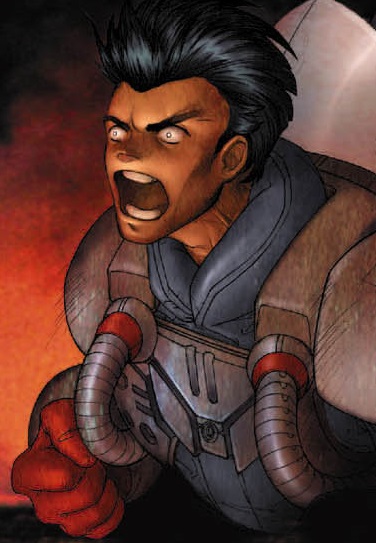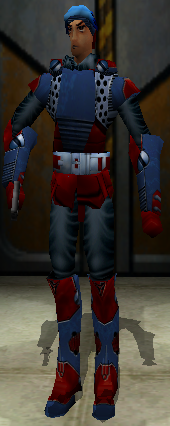Monolith’s mostly-fogotten, anime-inspired FPS is a needle full of nostalgia.
1998 was a big year for the first person shooter. Unreal was the start of a long-running series that would be most famous for its multiplayer-focused (with available single player campaign) Tournament games. Most notably, Half-Life was released, changing the landscape of the FPS for a long time to come. Though not revolutionary in its gameplay, it was nonetheless a polished and exciting experience, with a well-told story to boot. I played Half-Life until my eyes bled from ecstasy, especially once the modding scene was established.
In the same year, Monolith Productions dropped 2 FPSes that are not well known outside of those in the retro FPS community. Blood 2: The Chosen was a rushed (forced by GT Interactive while they were being bought out by Infogrames) mess. The levels are bland, enemy placement gets cheap and frustrating as the game goes on, and most weapons don’t have much impact. The other game was Shogo: Mobile Armor Division.

Shogo has you playing as Sanjuro Makabe, a member of the United Corporate Authority’s (dodged a DOOM bullet) security forces attempting to take down the terrorist group “The Fallen”. He’s out for revenge since the battle between The Fallen and the UCA resulted in the death of his brother Toshiro, his childhood friend Baku, and his ex-girlfriend Kura. Of course, since this is an anime-inspired game, the plot twists and turns and we learn more about what’s going on behind the curtain in front of Sanjuro. Also, Sanjuro is dating Kura’s sister Kathryn. Smart move.
Missions are performed either in a Mobile Combat Armor (MCA, the game’s giant robots) or on foot. This is one of the game’s biggest snags: The big robots don’t feel big. The 4 pilotable MCAs have different characteristics in terms of durability and handling, but they just feel like you’re walking around as if on foot. There’s none of the stomping and associated screen shake to go with it. The weapons certainly feel big and many of them involve explosives, though you won’t notice this very much once you hit the halfway point and start fighting the tougher MCAs (especially on “Hard” difficulty and above).
On foot, the combat is much tougher than in your MCA. Enemies have snake-like reflexes and will snapshot you with ease. There is a pseudo-stealth mechanic that kind of works, but is more hit-or-miss. With the frequent hipshots, this will require you to quicksave after almost every encounter and learn the layout of enemies, as well as figure out when and where they will ambush you.
In both modes, there is a “critical hit” chance on all enemies, which will restore 25% of your health. There are 2 major issues with this mechanic: First, critical hits are a dice roll and aren’t activated by a specific weak point; second, it’s a double-edged sword since enemies can perform critical hits on you as well. This can result in many deaths from one lucky shot, especially on foot when your opponents have shotguns.
The story of the game is essentially incomplete. The many relationships between the characters go unexplained. Early in the game you meet Hank Johnson, who turns out to be a friend of Kura, but it’s never explained who he is or how he met Kura. One of the antagonists, Ryo Ishikawa, just appears about halfway through the game and it’s up to you to read the manual to figure out why he’s important. There was also going to be a dialog mechanic that, depending on your choices would affect the game later down the line. This ends up only being used for the endgame, where it splits into one of two available endings. There’s one mission you can choose to do by rescuing a cat or by killing its owner, but that’s about it.
Yet despite how weird and janky the game is, and how the bizarre low-polygon models with anime eye textures have aged terribly (big surprise), I still come back to this game every now and then. The human enemies are fun to kill since they can “gib” and spray streams of blood all over the place. You can also step on people when you’re in an MCA if you don’t feel like shooting them. The MCA weapons are mostly fun, such as the Juggernaut, which is just a repeating 105mm cannon, or the Red Riot, the game’s portable nuke. Friendly AI is awful, but can be funny to watch as it gets stuck on elevators and other friendlies. Heck, it wanted to be so anime that it has a J-pop song for the main theme. The game has the look of a child’s first Gundam model: Not very well put together, but you can tell there was effort and passion put into making it, giving it an undeniable charm.

Overall, if you like old school FPS and anime, and are curious about trying a game buried under Half-Life’s success, I would give it a go. Otherwise, among others, Titanfall 2 did much better in terms of the on-foot-to-mech combat switchover, and it also does a better job of making you feel like you’re piloting a mech. Deus Ex also accomplished the system with your actions and choices affecting later outcome of the game. For me, every now and then I need to throw on the rose-tinted glasses and experience the other side of 1998.
Maybe look it up:
Shogo: Mobile Armor Division
Designed by Craig Hubbard
Developed and published by Monolith Productions
